July 26 2023 is International Day for the Conservation of the Mangrove Ecosystem (often referred to as International Mangrove Day). This is a day to reflect on the mighty mangrove, a family of hardy trees and shrubs that typically grow in tropical, coastal regions in saline water. For various reasons, their importance to both local ecosystems and the health of the planet at large cannot be overstated, so we thought we would celebrate Internation Mangrove Day with a blog on this unique species to highlight their importance in the Galapagos and beyond.
What are mangroves?
Mangrove forests are remarkable, productive ecosystems that straddle the boundary between land and sea. Covering somewhere between 33 million and 49 million acres of the globe, they have evolved to be able to survive and thrive in conditions that would kill almost any other plant species.
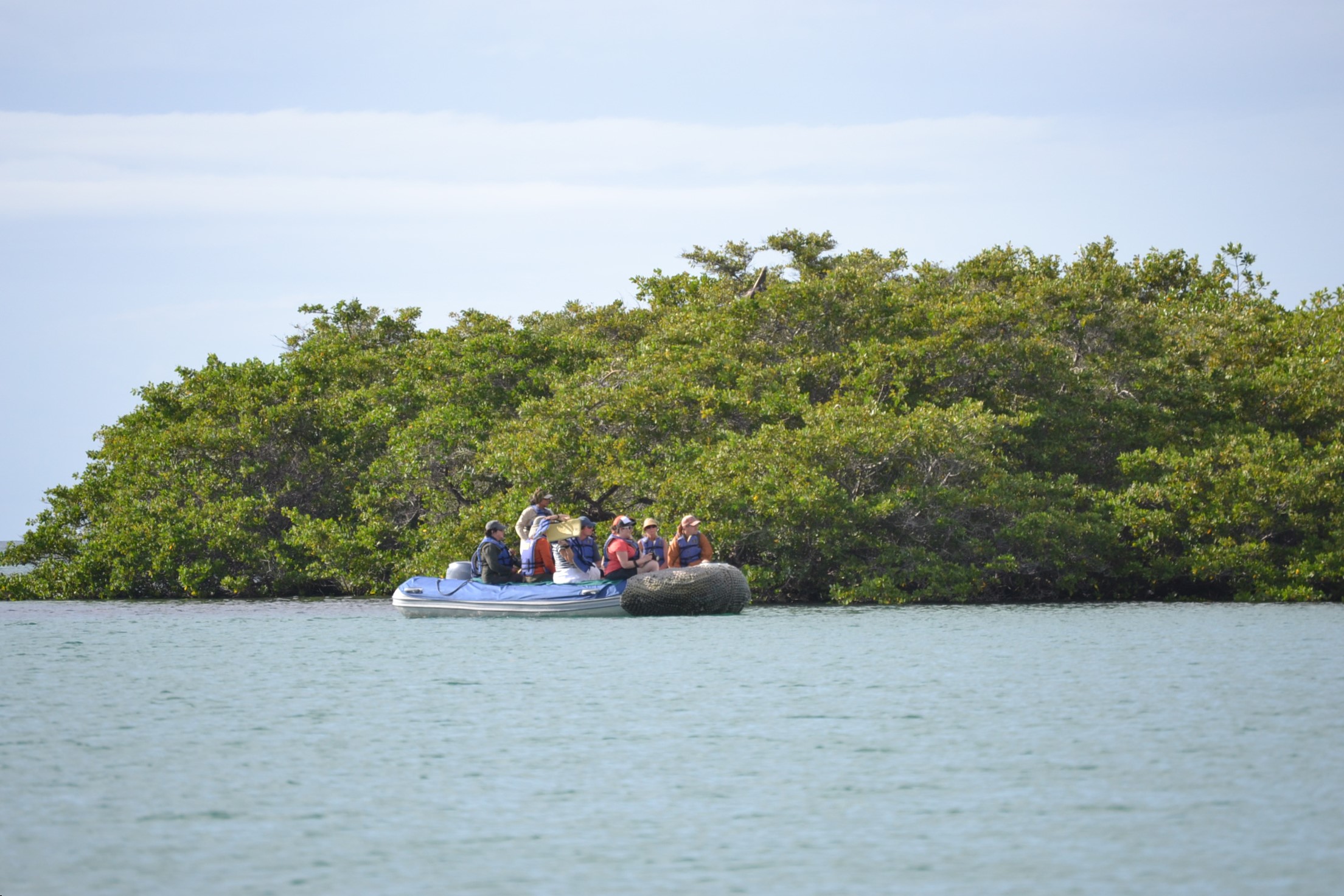
They have developed various ways to reduce salt intake – vital given they live in tidal zones and coastlines – including having particularly impermeable root systems and unique filtration abilities to prevent salt from entering the rest of the plant. They are known for a technique often referred to as the “sacrificial leaf” concept, whereby salt that does enter the plant is accumulated in old leaves, which are then shed, taking the salt with it and leaving the rest of the plant healthy.
Given the plants typically live in coastal regions with waterlogged soils, mangroves have evolved to grow stilt-like roots that grow downwards into the sea, helping the plant itself to remain supported above the water line. These roots play an important part in the lifecycle of many other creatures, offering shelter and hiding spots in the waters beneath whilst also protecting coastlines around the world from coastal wave erosion and the damage caused by tsunamis.
In fact, mangrove forests are known as some of the most biodiverse and resilient ecosystems on the planet, supporting not only large numbers of marine creatures – including baby sharks, sea turtles, shimmering schools of rays and fish aplenty in the waters below, but also land animals and a large numbers of sea birds, including iconic Galápagos species like the red-footed booby.
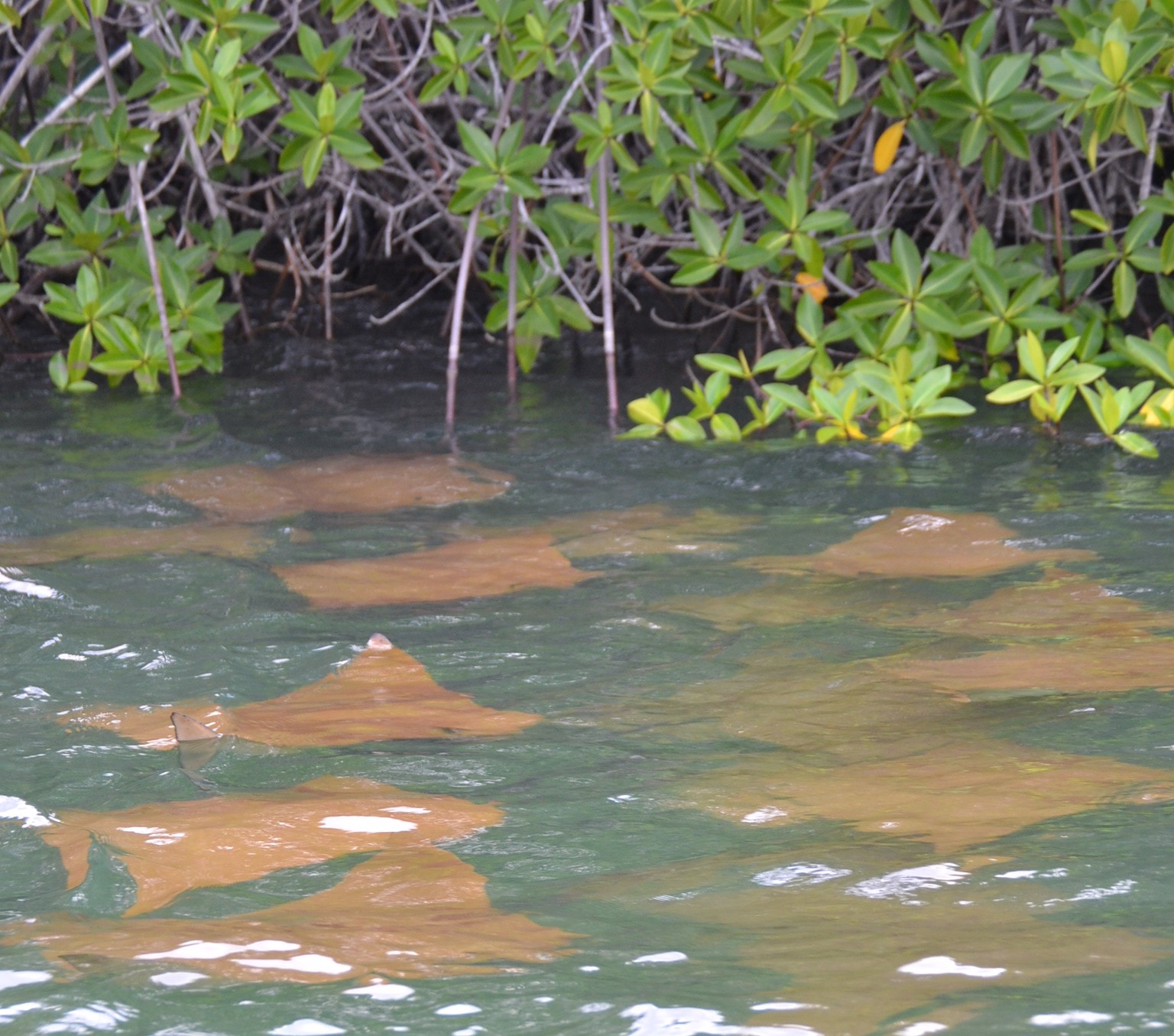
Aerial roots can absorb vital gases directly from the atmosphere rather than from the soil beneath the water. Given the water itself is saltwater rather than freshwater, the plants are incredibly efficient at limiting water loss through their leaves, with the ability to close the pores on the leaf surface and vary the orientation of the leaves to avoid the harsh tropical sun.
And on top of all this, mangroves have even developed tricks to help their offspring get a head start in life – vital in such a harsh environment. Whilst most plant species have seeds that germinate in soil, mangrove seeds germinate whilst still attached to the parent tree. This forms a ready-to-go seedling that already has leaves to produce its own energy via photosynthesis. These seedlings then drop off the parent tree, and can survive for many months, floating on the waves until it reaches a mud flat or other spot where it can root and establish itself.
Global importance
Whilst the complex web of twisted, tangling roots provide much needed shelter for local ecosystems, the benefits of mangroves stretch far beyond their forest boundaries.
These complex ecosystems contribute to the safety, food security, and protection of coastal communities – both wildlife and human – worldwide. Mangroves are ingenious when it comes to filtering out pollutants and trapping sediment from the land, recycling pollutants, preserving water quality and supporting a whole world of biodiversity.
Mangrove leaves are the foundation of an extraordinarily fruitful food web, delivering nutrients for algae and invertebrates that go on to feed many other organisms. Nutrients and plankton flow into and out of the mangrove lagoons with the tides, making mangroves important breeding and nursery grounds for fish, rays and invertebrates, juvenile sharks, turtles, penguins, flamingos and seabirds.
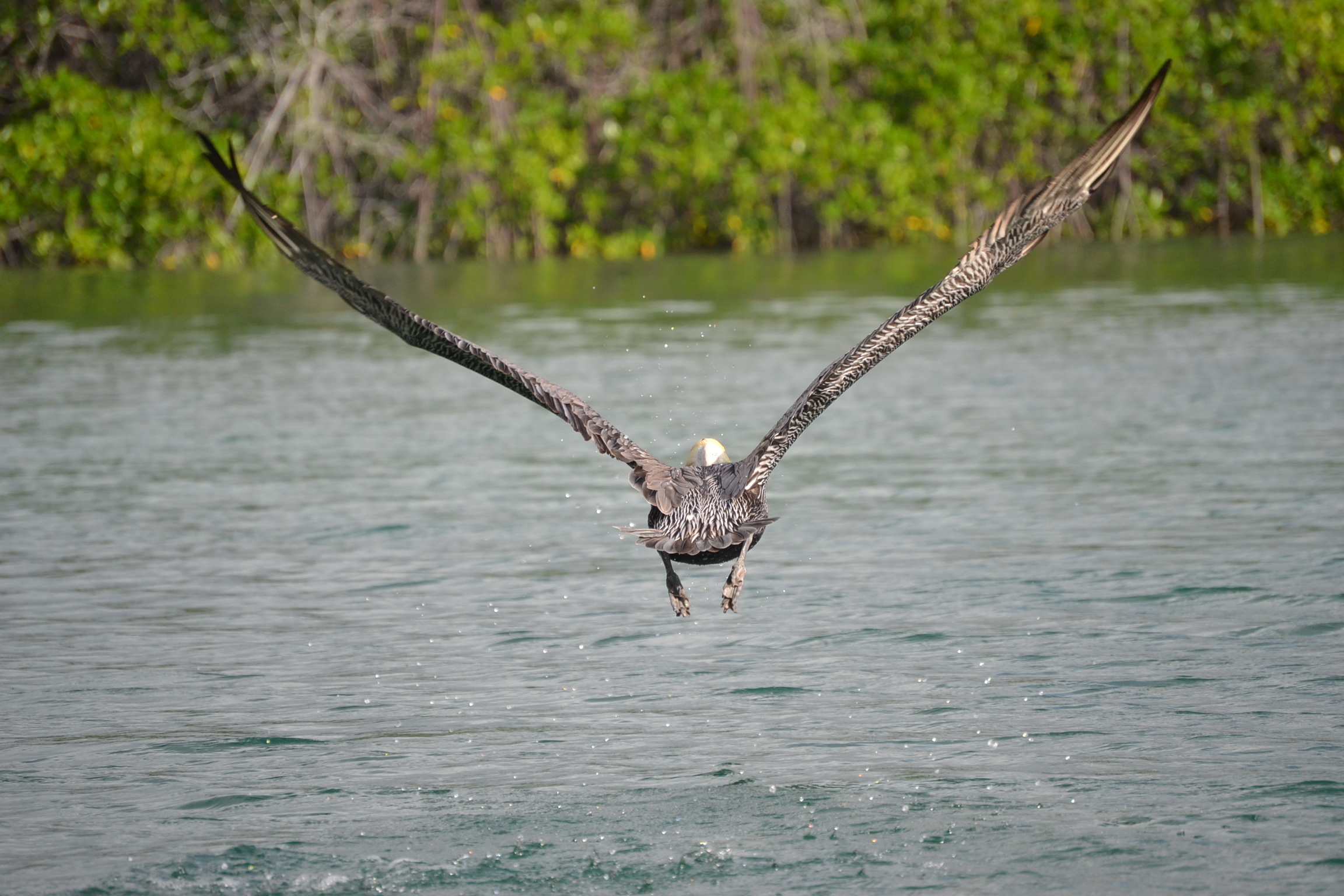
Environmentally, mangroves are home to a diverse array of terrestrial organisms and many species of coastal and offshore fish and crustaceans which depend on mangroves for their breeding, spawning and hatching grounds.
Mangroves also act as coastal defences against storms, erosion, tsunamis and rising sea levels, buffering the waves and sheltering the land beyond. They form what are known as “blue carbon ecosystems”, along with salt marshes and seagrasses, sequestering huge amounts of carbon within both the plants and sediments below and thus forming a critical component of nature-based climate change solutions.
Salt-loving mangrove trees and shrubs are often among the first species to colonize mud and sandbanks flooded by seawater, but, worryingly, an increase in coastal development and changes to land use are reducing mangrove populations globally, leading to potentially devastating ecological and socio-economic consequences.
Exploring Galapagos mangroves with Ecoventura
Mangroves occur naturally in around a third of all coastal areas in the Galapagos archipelago. It is thought that over a period of millions of years, plants and seeds from mangroves in the Far East floated west across the ocean to colonize the Galápagos Islands. Today, the pristine islands of the Galápagos are the only Ecuadorian province with mangroves that have been spared from deforestation. Extending along the shores of many islands, the mangrove forests of the Galapagos are made up of four species: red, black, white and button mangrove.
Ecoventura operates numerous excursions into mangrove lagoons. We explore Black Turtle Cove, Genovesa, Punta Cormorant, Floreana, and Elizabeth Bay on Isabela Island, allowing our passengers the opportunity to experience first-hand the wonder of these precious wetlands and the multitude of species they support.
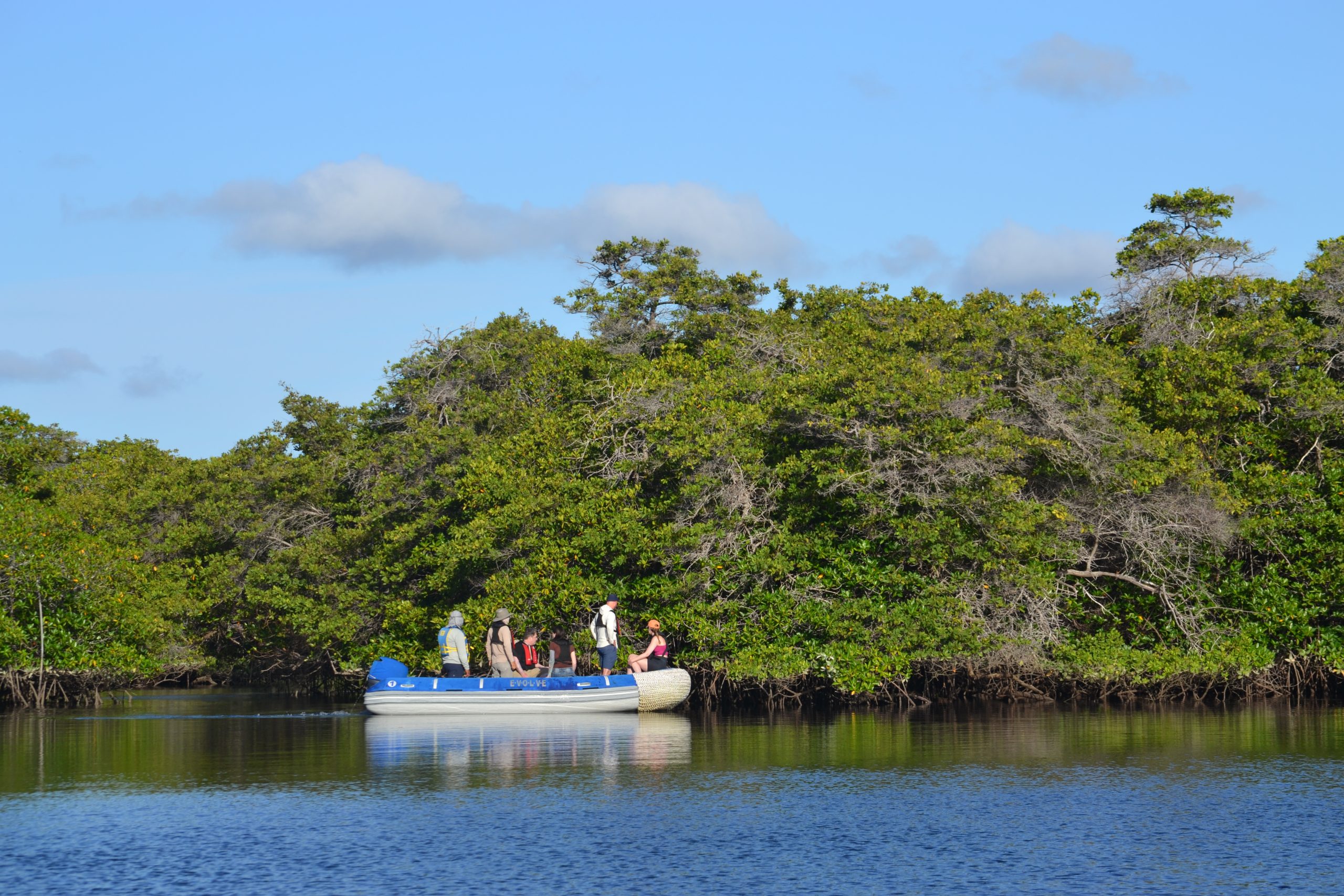
Our pangas – otherwise known as zodiacs, the inflatable launches used to transfer passengers from our yachts to shore – are small, low-impact boats that are ideal for transporting guests to the hidden corners of these crucial habitats. Keep a lookout as our expert drivers explore the lagoons and winding waterways; you are sure to spot turtles bobbing gently on the calm, sheltered surfact, curious sealions zipping through the root systems, and baby sharks and fish hiding and feeding in the nutrient rich waters.
Kayaks and stand-up paddleboards are another great way to take to the water and quietly explore untouched mangrove estuaries and lagoons. The shelter they provide means the seas are always calm and still; perfect to paddle gently through the lagoons whilst looking for red footed boobies, pelicans and other birds of the Galapagos feeding amongst the leaves.
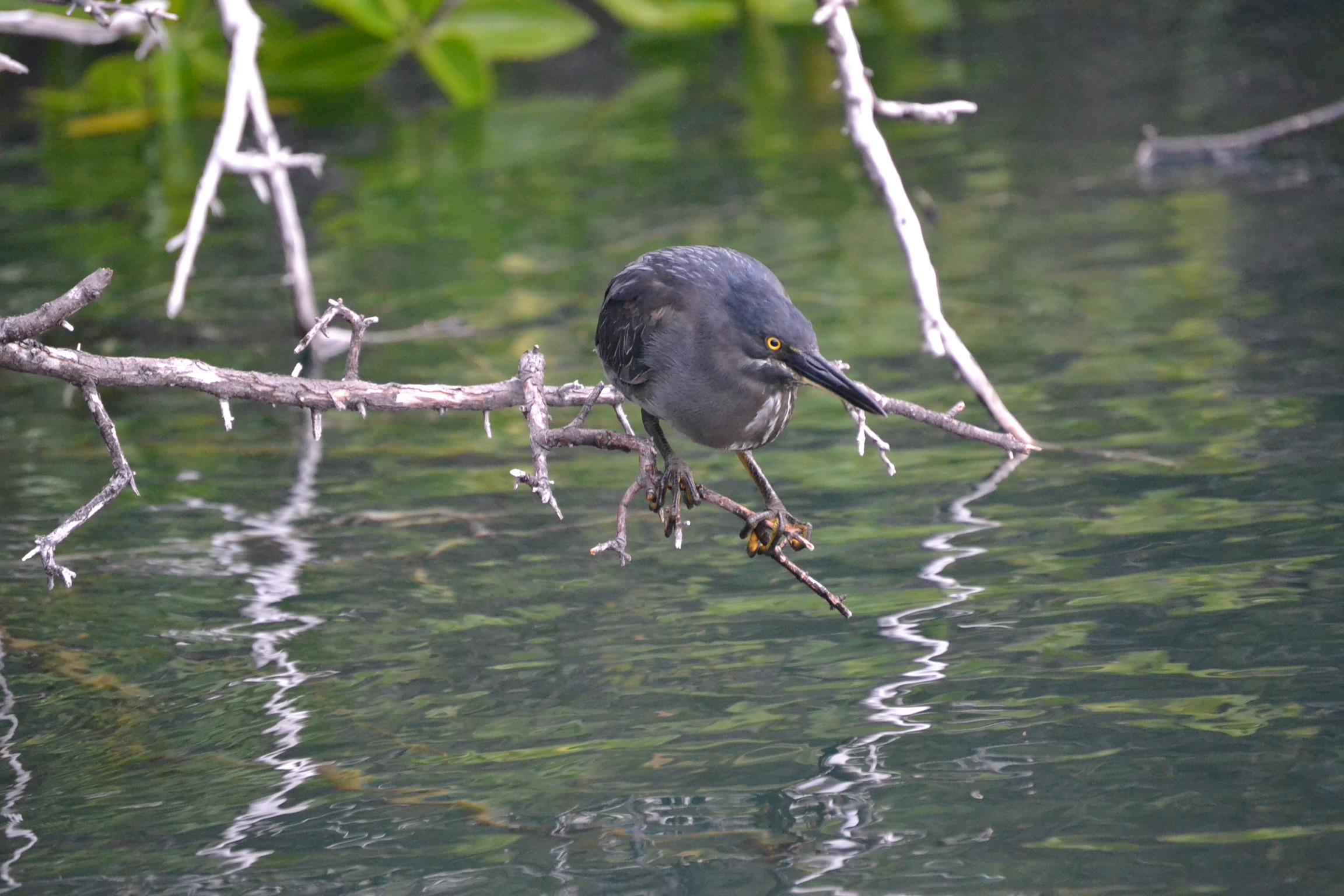
A trip to the wetlands on the island of Isabela – home to the most extensive area of mangroves in the Archipelago – provides guests with a fascinating glimpse into the level of biodiversity supported by the mangrove ecosystem. Several endemic and native species depend entirely on these wetlands to complete their life cycle, including the Galápagos violin crab. The critically endangered Mangrove finch, one of Darwin’s Finches, is the rarest bird in the Galápagos – only 100 or so adult birds are thought to remain, confined as they are to the mangroves of Playa Tortuga Negra and Caleta Black on the north-west coast of Isabela Island. It is hard to understate quite how important the mangrove ecosystem really is to the Galapagos and its wildlife.
But the mangroves also provide benefits beyond the natural world, playing as they do not only an important ecological role in local marine ecosystems, but also bringing great socio-economic benefits to the human communities living in the Galápagos Islands.

The abundance of marine creatures that they support provides food for local populations and supports the artisanal fishing industry. The root systems also act as water filters, and protecting coastlines from tidal and wave erosion.
Sharks, rays and a huge variety of fish live in great numbers in mangrove areas and are of great significance to the local tourism industry, attracting divers and snorkellers to the islands. Commenting on the importance of the Galápagos mangroves, scientist Dr. Pelayo Salinas de León of the Charles Darwin Foundation explains: “During their juvenile stage, fishes of several species, including young sharks, are vulnerable to become lunch for a larger predator. The complex mangrove root systems not only provide an excellent hiding place for these baby fishes, but also plenty of food during this critical stage of their life cycle”. They then leave the mangroves to explore the wider archipelago, but can only do so in such large numbers because they had somewhere safe to grow up.
Tempted to explore the miracle of the mangrove for yourself? Contact us today to discuss planning an unforgettable trip around the Galápagos Islands with Ecoventura.




